7 Best Tips for Keeping Outdoor Plants Alive During a Heat Wave
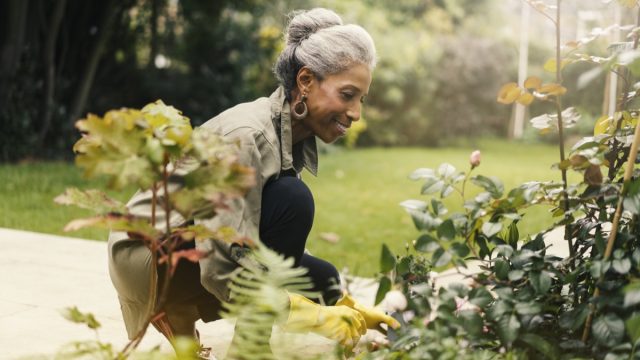
Temperatures have reached staggering highs this summer. An enduring heat wave continues to scorch the Southwest, and some experts say that the current hot weather streak could be the hottest in recorded history. Your first concern should be caring for yourself, however, you may also be wondering how to care for your outdoor plants since many are vulnerable to stress and dehydration during prolonged periods of extreme heat. Keep reading to learn gardening experts’ seven top tips for caring for your outdoor plants during a heat wave—so your favorite flora will live to fight another day.
RELATED: 10 Easy Hacks to Save Your House Plants That Gardeners Swear By.
1
Water deeply and consistently.
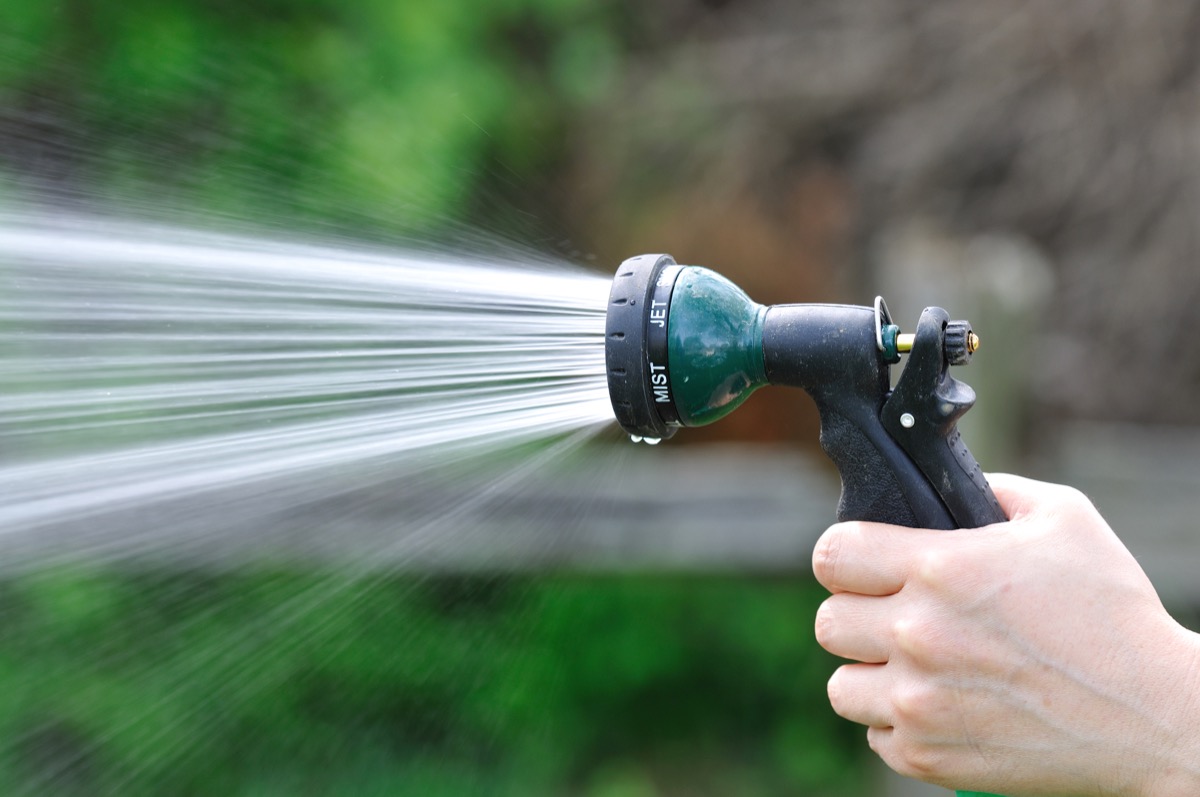
Just as you can quickly become dehydrated during a heat wave, your plants are also desperate for a drink.
Andrew Laurier, a gardening expert with Be.Green, recommends increasing the frequency of watering during a heat wave, focusing on deep watering rather than surface-level sprinkling.
“Water in the early morning or evening to minimize evaporation,” Laurier suggests. “Ensure that the water reaches the root zone to sustain the plants during those hot days.”
Fern Berg, a gardening expert and the founder of Tree Vitalize, agrees that deep watering is essential, and says you should regularly check your soil’s moisture levels to determine if more water is needed.
“If the top one to two inches of soil is dry, it is time to provide some water to your plant! You can also purchase a moisture meter that will give you an indication of your soil’s moisture levels without needing to get your hands dirty,” she says.
2
Mulch to conserve moisture.

Deep watering helps deliver much-needed moisture during a heat wave—and mulching is the key to retaining that moisture throughout the day.
“Apply a layer of organic mulch, such as wood chips or straw, around the base of your plants,” advises Laurier. “Mulching helps to retain moisture in the soil, reduces weed growth, and regulates soil temperature. It also prevents excessive evaporation and protects the roots from direct sunlight.”
Gene Caballero, co-founder of GreenPal, agrees that mulch is an excellent insulator for plant roots during prolonged periods of heat. He recommends laying two to three inches of organic mulch around the base of your plants to help them regulate their temperature and moisture levels.
RELATED: 5 Plants That Will Keep Mosquitoes Out of Your Yard, According to Pest Experts.
3
Provide shade and shelter.
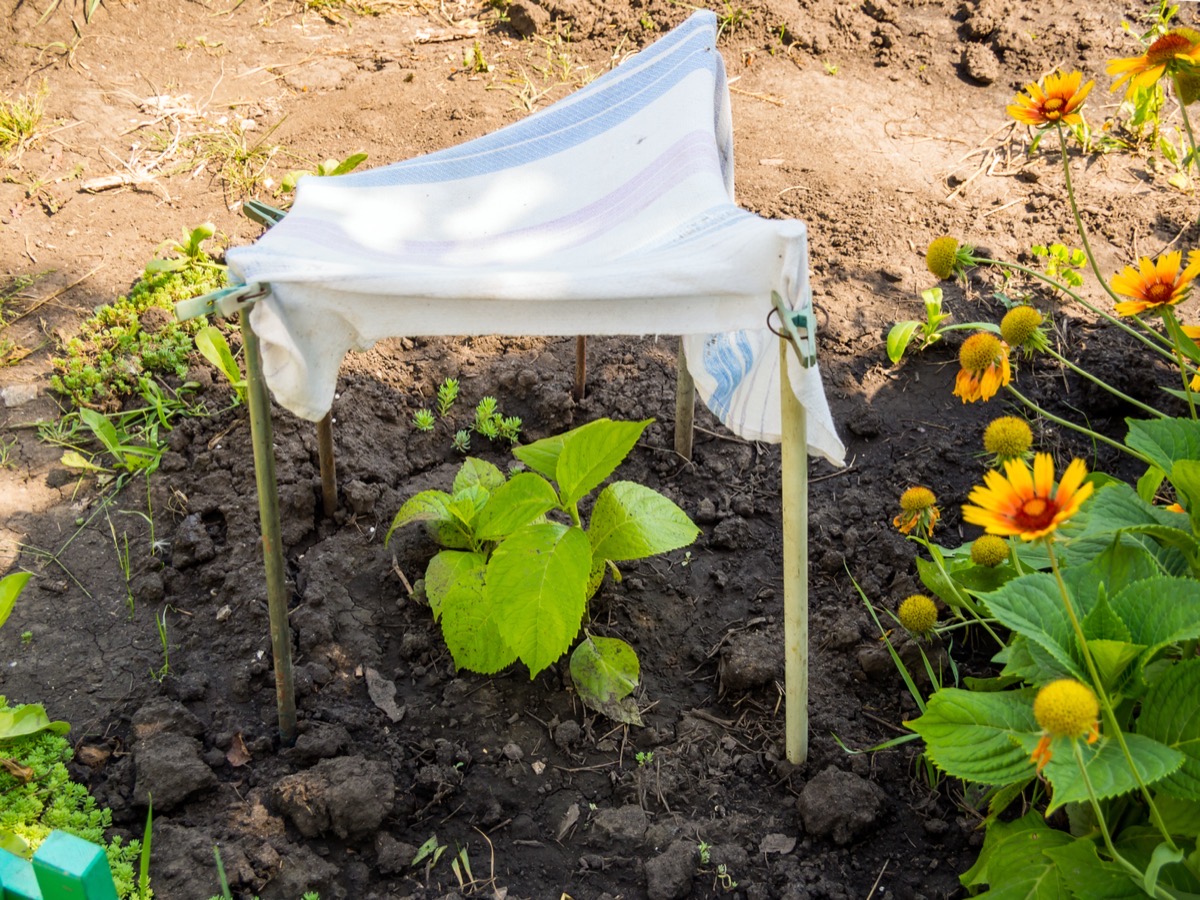
Much like you should seek shelter on a scorchingly hot day, your plants will also benefit from a break from the sun’s glare.
“It is a good idea to provide some temporary shade for your most heat-sensitive plants. This is as simple as using old sheets, some shade cloth, or even a pop-up umbrella or gazebo for larger plants,” says Berg. “By protecting your plants from direct sunlight during the hottest part of the day, you will reduce the likelihood of them getting too heat stressed.”
Laurier adds that reducing the intensity of sunlight minimizes water loss through evaporation. “Additionally, consider relocating potted plants to shaded areas during extreme heat,” he suggests.
4
Offer a windbreak.
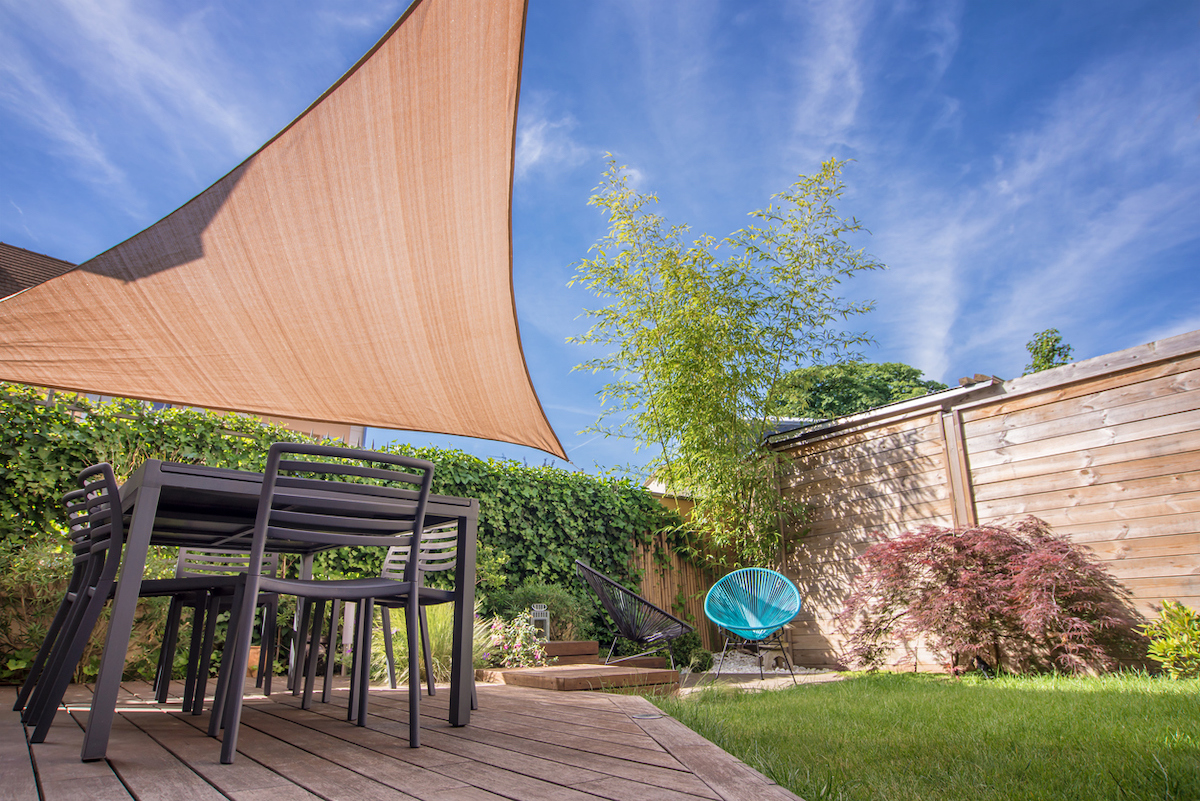
Just as your plants need a break from the sun, they could also use a break from hot winds.
“If the heatwave is accompanied by hot and dry wind, protecting your plants with a wind break will also make a big difference to their ability to survive the extreme weather,” explains Berg. “Not only will the wind place additional pressure on an already stressed plant, but it will dry the surrounding soil out even faster than the sun alone.”
Berg says that an effective windbreak can be as simple as hanging a sheet of plastic, wood, or metal above your vulnerable plants. “A large bin, wheelbarrow placed on its side or other garden furniture can also be used. Just make sure your windbreak is secure and doesn’t become a hazard!”
RELATED: 8 Easy Outdoor Plants That Don’t Need Sunlight.
5
Avoid fertilizing.
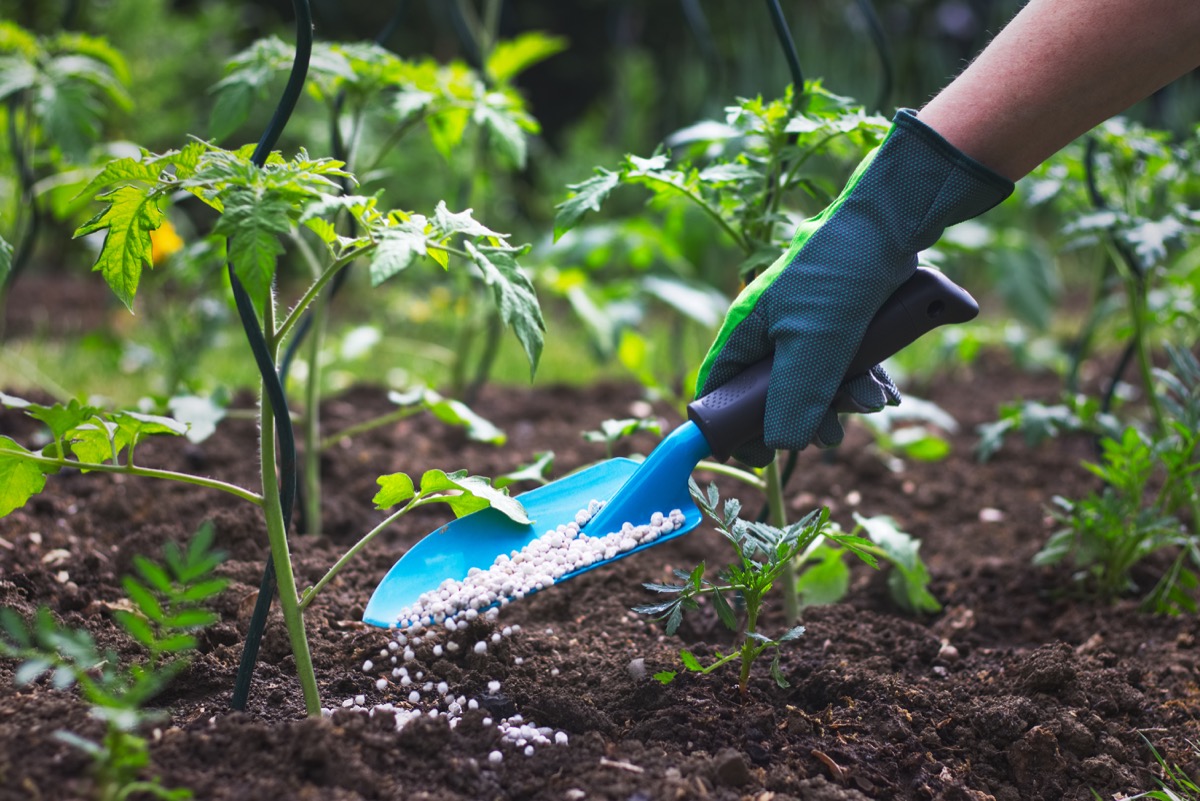
When you see your plants struggling, you may instinctively intervene with fertilizer. However, experts warn that this can do more harm than good during a heat wave.
“High temperatures can stress plants, making them more susceptible to fertilizer burn,” explains Laurier. “It’s best to avoid fertilizing during a heat wave as it may further strain the plants. Instead, focus on maintaining their hydration and wait until the weather cools down before resuming fertilization.”
6
Be prepared to paint.

Another way to help reduce heat stress in trees is to whitewash their trunks. This helps to reflect the sunlight from the bark and reduce the risk of sunscald, especially on fruit trees and flower trees.
“If you have trees that are susceptible to heat stress—for example, an avocado tree—it might be time to whip out the paintbrush. By painting the trunk of your tree, a process known as whitewashing, you can prevent delicate trees from becoming sunburnt during a heatwave,” says Berg.
The expert gardener explains that the process involves mixing equal parts of white interior latex paint with water and applying the mix to the trunk or any exposed bark using a (preferably) new paintbrush.
“This is especially beneficial for young trees as they have more tender bark that is highly susceptible to sunburn,” she says.
For more gardening tips sent directly to your inbox, sign up for our daily newsletter.
7
Monitor your plants closely.
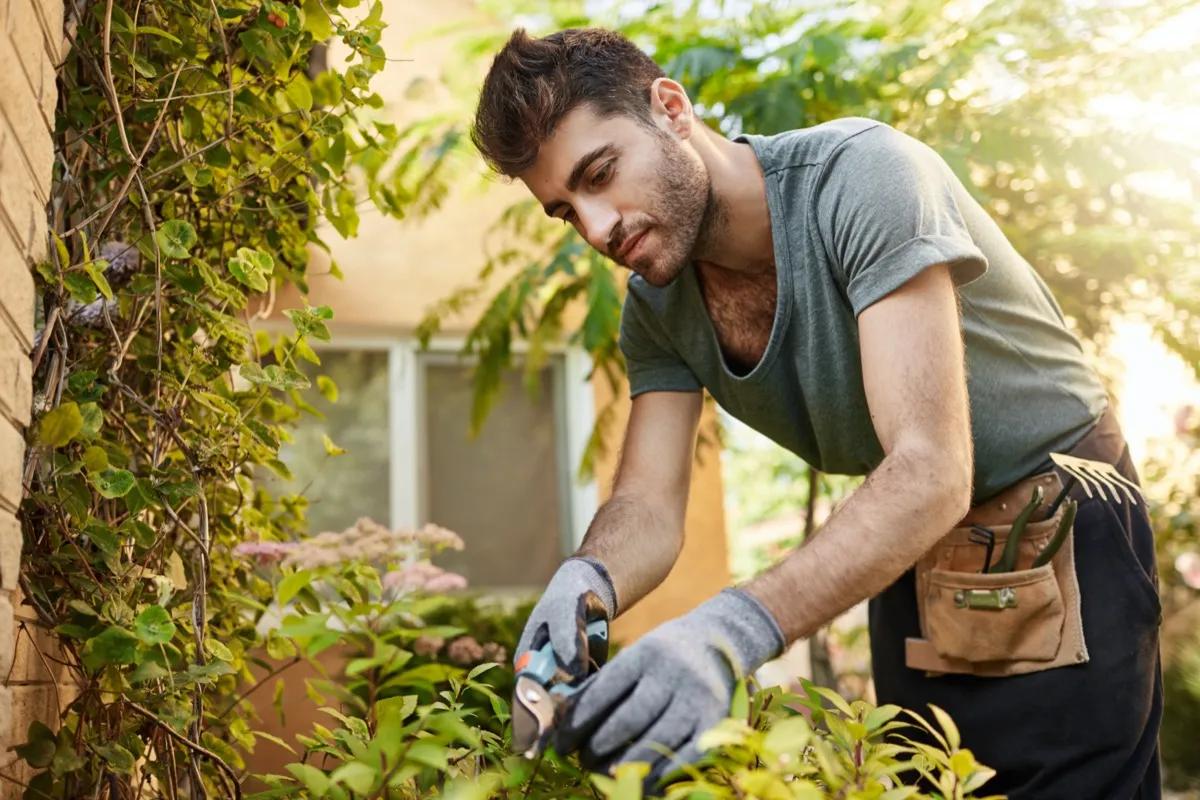
Finally, a spike in temperatures means you should be monitoring your plants closely until the weather cools down.
“Keep a close eye on your plants for any signs of stress or damage caused by the heatwave,” says Laurier. “Look out for wilting leaves, yellowing, or browning foliage, as these may indicate dehydration or sunburn. Adjust your care routine accordingly, providing extra water and shade as needed.”
Caballero notes that potted plants may require top-level care during a heatwave since they dry out faster than those in the ground.
“You may need to water them once or even twice a day,” he tells Best Life. “Remember, every garden and every plant species is different, so you might need to adjust these guidelines to suit your specific situation.”